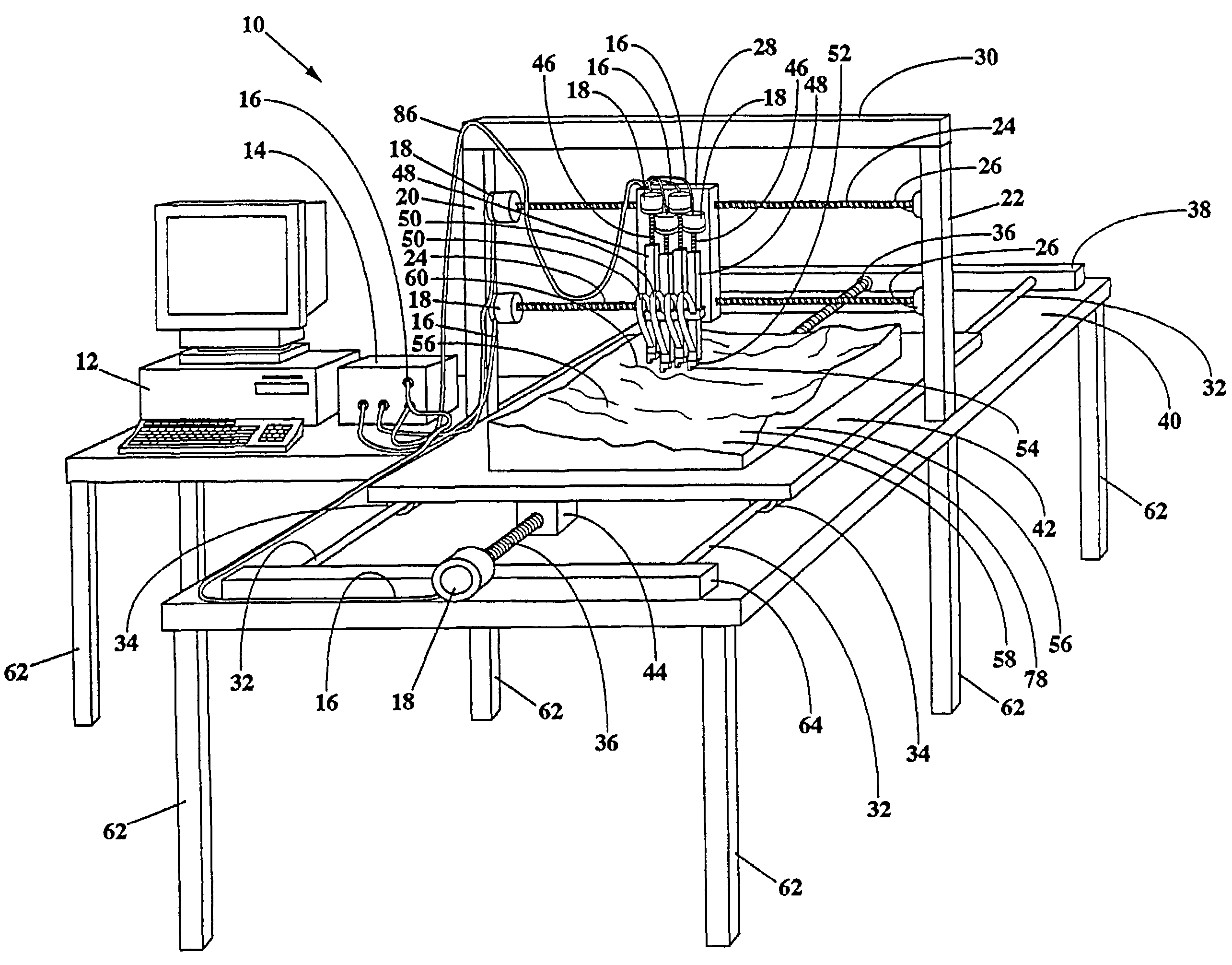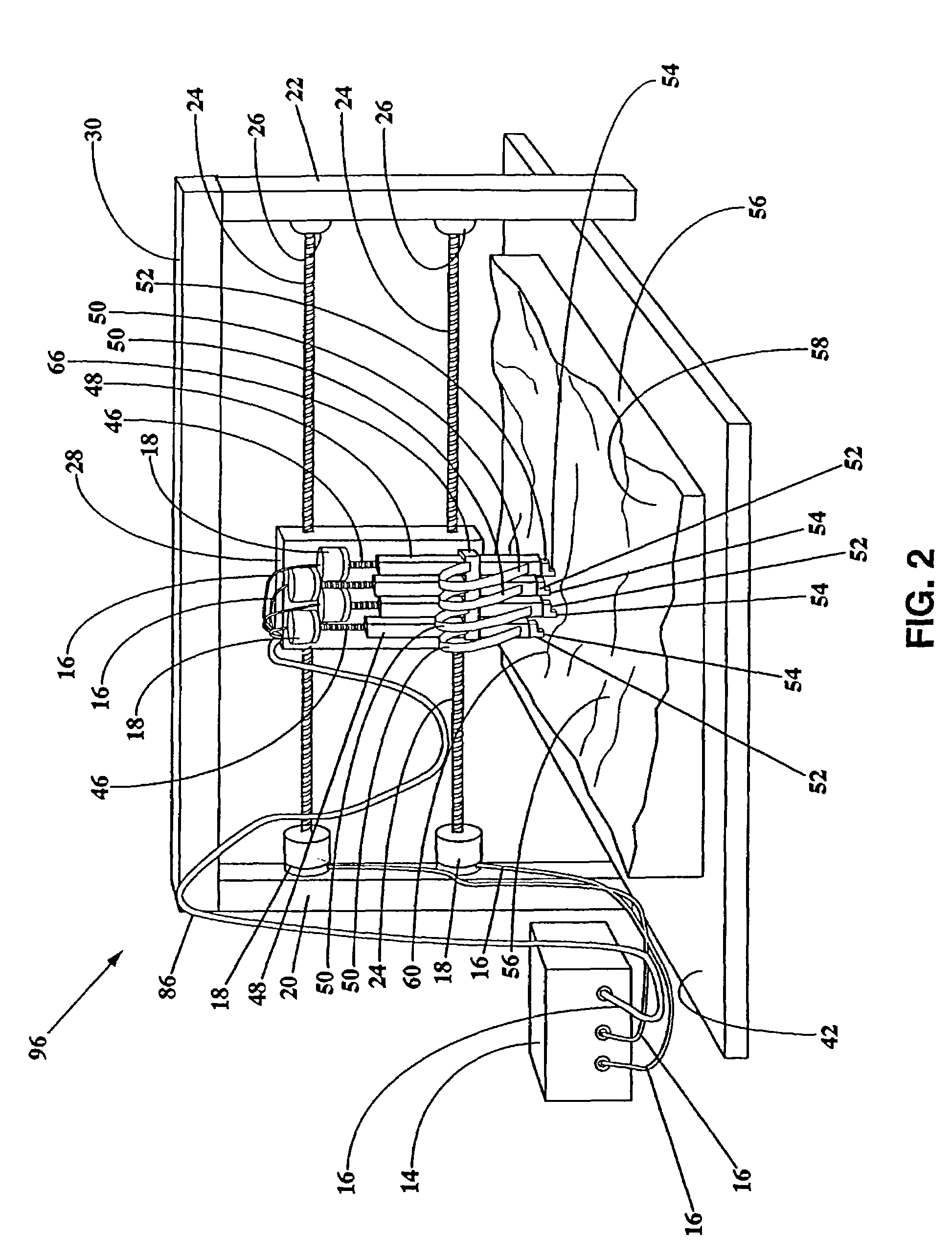Hi-resolution three-dimensional imaging apparatus for topographic and 3d models
a three-dimensional imaging and topographic technology, applied in the direction of instruments, superimposed coating process, liquid/solution decomposition chemical coating, etc., can solve the problems of time-consuming and less accurate disadvantages, no technology provides the means for imaging content of similar resolution onto the surface of topographical, or other 3d models, and achieve accurate registration and scaling. , the effect of speed improvemen
- Summary
- Abstract
- Description
- Claims
- Application Information
AI Technical Summary
Problems solved by technology
Method used
Image
Examples
Embodiment Construction
[0029]With reference to FIG. 1, a hi-resolution 3D printing apparatus 10 for imaging content onto topographical, and other 3D, models, is shown adjacent to, and is electronically coupled with, a computer system 12. The computer has a central processor that executes instructions, a memory for storing instructions to be executed, and non-volatile storage for storing the messages. Also included is a control interface 14 having electronic coupling 16 to control a plurality of stepper motors 18. It is noted that although interface 14 is shown in a housing which is external to the computer and separate from the stepper motors, one or more of the apparatus-controlling components housed therein could instead be located within the housing of the computer (e.g., on a circuit board interfaced with the CPU of the computer), and / or could be located within, or adjacent to, one or more stepper motor housings. Adjacent to computer 12 and interface 14 is a Y-axis support bed 40 that is supported by ...
PUM
| Property | Measurement | Unit |
|---|---|---|
| surface features | aaaaa | aaaaa |
| elevation | aaaaa | aaaaa |
| color | aaaaa | aaaaa |
Abstract
Description
Claims
Application Information
 Login to View More
Login to View More - R&D
- Intellectual Property
- Life Sciences
- Materials
- Tech Scout
- Unparalleled Data Quality
- Higher Quality Content
- 60% Fewer Hallucinations
Browse by: Latest US Patents, China's latest patents, Technical Efficacy Thesaurus, Application Domain, Technology Topic, Popular Technical Reports.
© 2025 PatSnap. All rights reserved.Legal|Privacy policy|Modern Slavery Act Transparency Statement|Sitemap|About US| Contact US: help@patsnap.com



